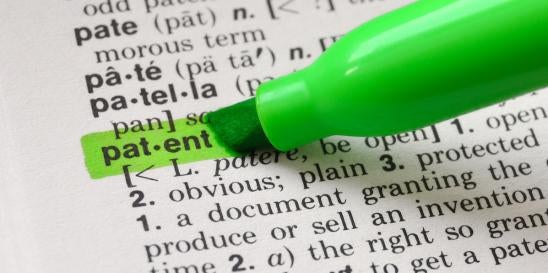Recent guidance published in the Federal Register by the United States Patent and Trademark Office (USPTO) explains some of what is required by patent examiners in making an obviousness case under 35 U.S.C. § 103. Since it is important to be informed on what guidance is given to examiners and to the public, this article highlights aspects of the new guidance that may help improve your odds of success at obtaining patents by understanding how obviousness rejections of patent application claims may be formulated by examiners.
The guidance focuses first on the flexibility examiners have when making obviousness rejections in a post-KSR era. For example, as part of the obviousness analysis, the guidance states that “a proper understanding of the prior art extends to all that the art reasonably suggests, and is not limited to its articulated teachings,” and “when evaluating the prior art from the perspective of a PHOSITA [person having ordinary skill in the art], Office personnel must take that person’s ‘ordinary creativity’ into account.” The guidance also states that “the Federal Circuit has echoed KSR in identifying numerous possible sources that may, either implicitly or explicitly, provide reasons to combine or modify the prior art to determine that a claimed invention would have been obvious.”
Thus, the guidance reminds examiners to use a flexible approach in (1) understanding the scope of the prior art, and (2) in providing a reason to modify the prior art. Transitioning from a rigid approach to following this guidance may make it easier for examiners to issue rejections, and may raise the bar on what constitutes non-obviousness. At the same time, applicants may be able to point specifically to this guidance to rebut obviousness assertions in instances where a rejection lacks reasoning for a proposed prior art modification, fails to consider the full scope of prior art, or considers prior art unreasonably without considering the PHOSITA perspective.
The guidance tempers examiner flexibility with the requirement to consider all evidence relevant to obviousness, and to identify facts and articulate sound reasoning that leads to an obviousness conclusion. For example, although examiners may refer to common knowledge or common sense, examiners must provide objective evidence of what is known publicly, and not refer to their own subjective knowledge. Here, the guidance states that it is a decision-makers’ duty to “provide a clear articulation of their reasoning, grounded in relevant facts, when making a determination that a claim would have been obvious,” and provides a reminder that this serves the goal of compact prosecution and allow patent practitioners and Office personnel to conclude at the earliest possible time. Applicants reminding examiners of these obligations should a rejection be lacking may not only help overcome a rejection but may help make the written record more clear by an examiner being asked to clearly explain reasoning and provide evidence where needed.







 i
i


